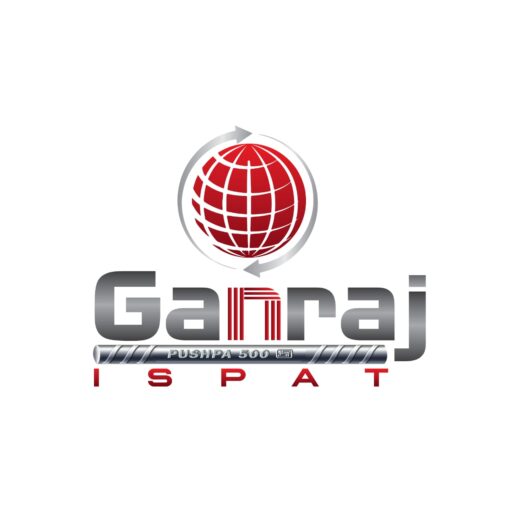
In the construction industry, choosing the right materials is paramount to ensure the safety and durability of a structure. Among the various options available for reinforcing concrete, HYSD vs TMT bars often comes up as a critical comparison. Both HYSD (High Yield Strength Deformed) bars and TMT (Thermo-Mechanically Treated) bars are popular choices, but which one is better for safe construction? Let’s delve into the difference between HYSD and TMT bars and explore their respective benefits.
Understanding HYSD Bars
HYSD bars, also known as High Yield Strength Deformed bars, are steel bars with a high yield strength, typically achieved through alloying. These bars are characterized by their ribbed patterns, which enhance their bonding with concrete. HYSD bars are known for their strength and are commonly used in the construction of residential and commercial buildings.
Understanding TMT Bars
TMT bars, or Thermo-Mechanically Treated bars, undergo a unique manufacturing process that involves rapid quenching of hot rolled steel bars, followed by tempering. This process results in a hard outer surface and a soft inner core, giving TMT bars a perfect blend of strength and flexibility. TMT bars are widely used in modern construction due to their superior properties.
Difference Between HYSD and TMT Bars
1. Manufacturing Process
The primary difference between HYSD and TMT bars lies in their manufacturing process. HYSD bars are produced through alloying and cold twisting, which enhances their strength but can affect their ductility. On the other hand, TMT bars undergo thermo-mechanical treatment, which ensures a hard outer surface and a ductile core. This unique process gives TMT bars an edge in terms of flexibility and overall performance.
2. Strength and Flexibility
When comparing HYSD vs TMT bars, one of the most significant differences is in their strength and flexibility. HYSD bars are strong but less ductile, making them prone to brittleness under certain conditions. In contrast, TMT bars offer high strength combined with excellent ductility, allowing them to withstand bending and deformation without breaking. This makes TMT bars more suitable for construction in areas prone to seismic activity.
3. Corrosion Resistance
Corrosion resistance is a critical factor in the longevity of steel bars. HYSD bars, being alloyed, have moderate corrosion resistance. However, TMT bars are specifically treated to enhance their resistance to corrosion. The manufacturing process of TMT bars involves the use of corrosion-resistant elements, making them more suitable for use in humid and coastal regions.
4. Bonding with Concrete
Both HYSD and TMT bars have ribbed patterns that enhance their bonding with concrete. However, TMT bars have a more uniform and continuous rib pattern, providing better anchorage and bonding with concrete structures. This improved bonding ensures the overall stability and strength of the construction.
5. Fire Resistance
Fire safety is an essential consideration in construction. TMT bars have a higher thermal stability compared to HYSD bars, making them more resistant to high temperatures. The hardened outer layer of TMT bars can withstand fire exposure without significant loss of strength, providing additional safety to the structure.
HYSD vs TMT Bars: Benefits of TMT Bars
Superior Earthquake Resistance
One of the standout features of TMT bars is their superior earthquake resistance. The high ductility and flexibility of TMT bars allow them to absorb and dissipate energy during seismic events, reducing the risk of structural failure. This makes TMT bars a preferred choice for construction in earthquake-prone areas.
Enhanced Durability
TMT bars are designed to offer enhanced durability. Their resistance to corrosion, high strength, and excellent bonding with concrete ensure the longevity of structures built with TMT bars. This long-lasting performance reduces the need for frequent repairs and maintenance, making TMT bars a cost-effective choice in the long run.
Better Safety
When it comes to safety, TMT bars offer multiple advantages. Their fire resistance, superior strength, and flexibility contribute to the overall safety of the structure. By choosing TMT bars, builders can ensure that their constructions are better equipped to handle various environmental and structural challenges.
Why Choose TMT Bars Over HYSD Bars?
Modern Construction Standards
Modern construction standards emphasize the need for materials that offer high performance and safety. TMT bars meet these standards by providing a combination of strength, ductility, and resistance to various environmental factors. This makes them a preferred choice for contemporary construction projects.
Versatility
TMT bars are highly versatile and can be used in a wide range of construction applications, from residential buildings to large infrastructure projects like bridges and dams. Their superior properties ensure consistent performance across different types of construction, making them a reliable choice for builders.
Compliance with International Standards
TMT bars are manufactured in compliance with international standards, ensuring their quality and reliability. This compliance guarantees that TMT bars used in construction projects meet the required specifications for safety and performance, providing builders with peace of mind.
Conclusion
In the debate of HYSD vs TMT bars, TMT bars emerge as the superior choice for safe and durable construction. Their unique manufacturing process, superior strength, flexibility, corrosion resistance, and fire resistance make them an ideal option for modern construction projects.
For more details contact us at: Plot No: A-3, Nagar-Pune Road, SupaParner Industrial Area, Supa, Parner, Ahmednagar – 414003. +91 9766173352. sales@ganrajispat.com. Visit our website – www.pushpasteel.com. By opting for TMT bars, builders can ensure that their constructions are not only robust and long-lasting but also safe and capable of withstanding various environmental and structural challenges.

Recent Comments